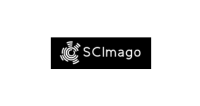A histopathological description of Amblyomma sculptum attachment site on the skin of a mare at different moments
DOI:
https://doi.org/10.5380/avs.v27i4.87740Palavras-chave:
Histology, parasitism, skin lesions, ticksResumo
Ticks’ saliva presents immunomodulatory activity and cause several tissue changes at the attachment site on the host's skin. Here, we compare different moments of the skin of a Mangalarga Marchador mare before, during and after tick attachment. On the skin with a fixed tick, we observed inflammatory infiltrate, degranulated mast cells, areas with an absence of nucleus and presence of pyknotic nuclei, type I collagen bundles are quite thick around the tick's hypostome, fibrotic process, and the occurrence of cell death by necrosis. In the skin after the tick detached, we observed a complete loss of the structure of the extracellular matrix due to the formation of edema of the inflammatory exudate, a large presence of eosinophils and macrophages, new blood vessels, and dilated vessels, indicating that in the absence of immunomodulation promoted by tick saliva, the animal's organism can start the repair and healing process.
Referências
Arthur DR. Tick feeding and its implications. Adv Parasitol, 8:275-292, 1970.
Aziz J, Shezali H, Radzi Z, et al. Molecular mchanisms of stress-responsive changes in collagen and elastin networks in skin. Skin Pharmacol Physiol, 29:190-203, 2016. https://doi.org/10.1159/000447017
Barros-Battesti D, Arzua M., Bechara G. Carrapatos de Importância Médico-Veterinária da Região Tropical: Um guia ilustrado para identificação de espécies. São Paulo (SP): Vox: ICTTD-3: Butantan, 2006.
Bayford LR, Craig ME, Crosby BL. A review of ectoparasites and their effect on cattle production. J Anim Sci, 70:597-602, 1992.
Borriello F, Iannone, R, Marone G. Histamine release from mast cells and basophils. In: Hattori Y, Seifert R. Histamine and Histamine Receptors in Health and Disease. Handbook of Experimental Pharmacology, 241. Springer, Cham, 2017. p.121-139. https://doi.org/10.1007/164_2017_18
Bowman AS, Coons LB, Needham GR, et al. Tick saliva: recent advances and implications for vector competence. Med Vet Entomol, 11:277-285, 1997. https://doi.org/10.1111/j.1365-2915.1997.tb00407.x
Chmelar J, Calvo E, Pedra JHF, et al. Tick salivary secretion as a source of antihemostatics. J Proteomics, 75:3842-3854, 2012. https://doi.org/10.1016/j.jprot.2012.04.026
Chusid MJ. Eosinophils: Friends or foes?. JACI. 6:1439-1444, 2018. https://doi.org/10.1016/j.jaip.2018.04.031
Dai J, Narasimhan S, Zhang L, et al. Tick histamine release factor is critical for Ixodes scapularis engorgement and transmission of the Lyme disease agent. PLoS Pathog, 6:e1001205, 2010. https://doi.org/10.1371/journal.ppat.1001205
D’Arcy MS. Cell death: a review of the major forms of apoptosis, necrosis and autophagy. Cell Biol Int, 43:582-592, 2019. https://doi.org/10.1002/cbin.11137
Dolber PC, Spach MS. Conventional and confocal fluorescence microscopy of collagen fibers in the heart. J Histochem Cytochem, 41:465-469, 1993. https://doi.org/10.1177/41.3.7679127
Esteves E, Bizzarro B, Costa FB, et al. Amblyomma sculptum salivary PGE2 modulates the dendritic cell-Rickettsia rickettsii interactions in vitro and in vivo. Front. Immunol. 10, 2019. https://doi.org/10.3389/fimmu.2019.00118
Gonçalves RV, Mezêncio JMS, Benevides GP, et al. Effect of gallium-arsenide laser, gallium-aluminum-arsenide laser and healing ointment on cutaneous wound healing in Wistar rats. Braz J Med Biol, 43:350-355, 2010. https://doi.org/10.1590/S0100-879X2010007500022
Hargis AM, Myers S. The integument. In: Pathologic basis of veterinary disease. Elsevier, 2017. p.1009-1146.e1. https://doi.org/10.1016/B978-0-323-35775-3.00017-5
Junqueira LCU, Carneiro J. Biologia Celular e Molecular, 8a ed. Guanabara Koogan, Rio de Janeiro, 2005.
Kawasumi A, Sagawa N, Hayashi S, et al. Wound healing in mammals and amphibians: Toward limb regeneration in mammals. In: Heber-Katz E, Stocum D. New perspectives in regeneration. Current Topics in Microbiology and Immunology, 367. Springer, Berlin, Heidelberg, 2012. p.33-49. https://doi.org/10.1007/82_2012_305
Kazimírová M, Štibrániová I. Tick salivary compounds: their role in modulation of host defences and pathogen transmission. Front Cell Infect Microbiol, 3:43, 2013. https://doi.org/10.3389/fcimb.2013.00043
Keirans JE. Systematics of the Ixodidae (Argasidae, Ixodidae, Nuttalliellidae): An overview and some problems. In: Fivaz B, Petney T, Horak L. Tick Vector Biology. Medical and Veterinary Aspects. Berlin, 1992. p.1-21.
Kim TK, Curran J, Mulenga A. Dual silencing of long and short Amblyomma americanum acidic chitinase forms weakens the tick cement cone stability. J Exp Biol, 217:3493-3503, 2014. https://doi.org/10.1242/jeb.107979
Latif AA, Punyua DK, Capstick PB, Nokoe S, Walker AR, Fletcher J.D. Histopathology of attachment sites of Amblyomma variegatum and Rhipicephalus appendiculatus on Zebu cattle of varying resistance to ticks. Vet Parasitol, 38:205-213, 1991.
Mans BJ, Ribeiro JMC. Function, mechanism and evolution of the moubatin-clade of soft tick lipocalins. Insect Biochem Mol Biol, 38:841-852, 2008. https://doi.org/10.1016/j.ibmb.2008.06.007
Mans BJ, Ribeiro JMC, Andersen JF. Structure, function, and evolution of Biogenic Amine-binding proteins in soft ticks. J Biol Chem, 283:18721-18733, 2008. https://doi.org/10.1074/jbc.M800188200
Molento MB. Resistência parasitária em helmintos de eqüídeos e propostas de manejo. Ciênc Rural, 35:1469-1477, 2005.
Moraes FR, Moraes JRE, Rocha UF, Costa AJ, Ardisson, F.A. Estudo das alterações estruturais produzidas por fêmeas ingurgitadas de Rhipicephalus (Boophilus) microplus (Canestrini) na pele fresca, pele salgada e couro curtido de bovinos. Ars Vet, 7:57-63, 1991.
Nogueira BCF, Campos AK, Alves RS, Faria RCV, Sarandy MM, Fonseca e Silva F, Gonçalves RV. Oxidative and local histopathological response on skin woun of horses due to Amblyomma sculptum tick parasitism. Res Vet Sci, 136:550-560, 2021.
Nuttall PA. Wonders of tick saliva. Ticks Tick-borne Dis, 10:470-481, 2019. https://doi.org/10.1016/j.ttbdis.2018.11.005
Oliveira LMF, Borges RA. 2011. Biologia e controle de carrapatos em equinos no Brasil. Brazil: ABQM - Ass. Bras. de criadores de cavalos quarto de milha; [acessed 2021 Apr 2]. Available from: www.abqm.com.br/pt/conteudos/stud-book/biologia-e-con trole-de-carrapatos-em-equeinos-no-brasil.
Oryan A, Mohammadalipour A, Moshiri A, et al. Topical application of Aloe vera accelerated wound healing, modeling, and remodeling. Ann Plast Surg, 77:37-46, 2016. https://doi.org/10.1097/SAP.0000000000000239
Paesen GC, Adams PL, Harlos K, Nuttall PA, Stuart DI. Tick histamine-binding proteins. Mol Cell, 3:661-671, 1999. https://doi.org/10.1016/S1097-2765(00)80359-7
Rehbein S, Visser M, Winter R, et al. Productivity effects of bovine mange and control with ivermectin. Vet Parasitol, 114:267-284, 2003.
Sangamnatdej S, Paesen GC, Slovak M, et al. A high affinity serotonin- and histamine-binding lipocalin from tick saliva. Insect Mol Biol, 11:79-86, 2002. https://doi.org/10.1046/j.0962-1075.2001.00311.x
Shiota N, Kakizoe E, Shimoura K, Tanaka T, Okunishi H. Effect of mast cell chymase inhibitor on the development of scleroderma in tight-skin mice. British J Pharmacol, 145:424-431, 2005. https://doi.org/10.1038/sj.bjp.0706209
Shiota N, Nishikori Y, Kakizoe E, Shimoura K, Niibayashi T, Shimbori C, Tanaka T, Okunishi H. Pathophysiological role of skin mast cells in wound healing after scald injury: Study with mast cell-deficient W/WV mice. Int Arch Allergy Immunol, 151:80-88, 2010. https://doi.org/10.1159/000232573
Steelman CD. Effects of external and internal arthropod parasites on domestic livestock production. Ann Rev Entomol, 21:155-178, 1976.
Suppan J, Engel B, Marchetti-Deschmann M, Nürnberger S. Tick attachment cement - reviewing the mysteries of a biological skin plug system. Biol Rev, 93:1056-1076, 2018. https://doi.org/10.1111/brv.12384
Valenzuela JG. Exploring tick saliva: from biochemistry to ‘sialomes’ and functional genomics. Parasitol, 129:S83-S94, 2004. https://doi.org/10.1017/S0031182004005189
Veríssimo CJ, Nicolau CVJ, Cardoso VL, Pinheiro MG. Hair coat characteristics and tick infestation on Gyr (zebu) and crossbred (Holstein Gyr) cattle. Arch de Zootec, 51:389-392, 2002.
Walker AR, Fletcher JD. Histological study of the attachment sites of adult Rhipicephalus appendiculatus on rabbits and cattle. lnt J Parasitol, 16:399-413, 1986.
Whitwell AC. Histopathology of the bite of Ixodes trianguliceps Birula. In: Wilde JKH. Tick-Borne diseases and their vectors. Proccedings of an International Conference, Held at the Centre of Tropical Veterinary Medicine. Edinburgh, 1978. p.82-87.
Wynn TA, Vannella KM. Macrophages in tissue repair, regeneration, and fibrosis. Immunity. 44:450-462, 2016. https://doi.org/10.1016/j.immuni.2016.02.015
Downloads
Publicado
Como Citar
Edição
Seção
Licença
Autores que publicam nesta revista concordam com os seguintes termos:
- Autores mantém os direitos autorais e concedem à revista o direito de primeira publicação, com o trabalho simultaneamente licenciado sob a Creative Commons - Atribuição 4.0 Internacional que permite o compartilhamento do trabalho com reconhecimento da autoria e publicação inicial nesta revista.
- Autores têm autorização para assumir contratos adicionais separadamente, para distribuição não-exclusiva da versão do trabalho publicada nesta revista (ex.: publicar em repositório institucional ou como capítulo de livro), com reconhecimento de autoria e publicação inicial nesta revista.
- Autores têm permissão e são estimulados a publicar e distribuir seu trabalho online (ex.: em repositórios institucionais ou na sua página pessoal) a qualquer ponto antes ou durante o processo editorial, já que isso pode gerar alterações produtivas, bem como aumentar o impacto e a citação do trabalho publicado.














